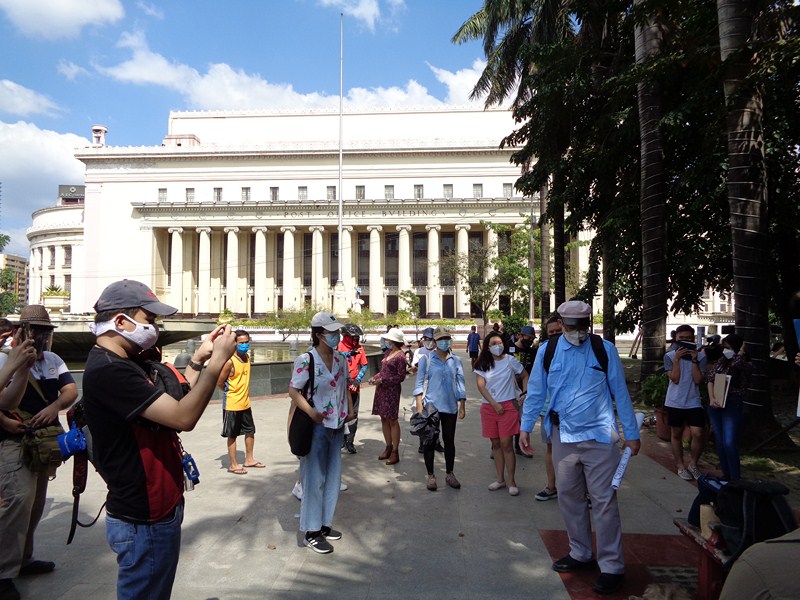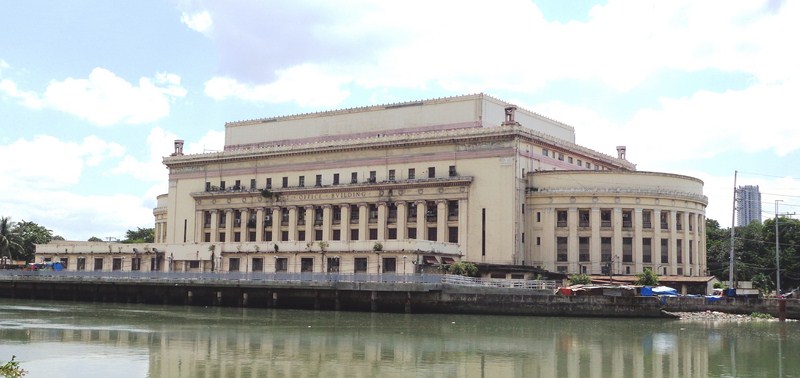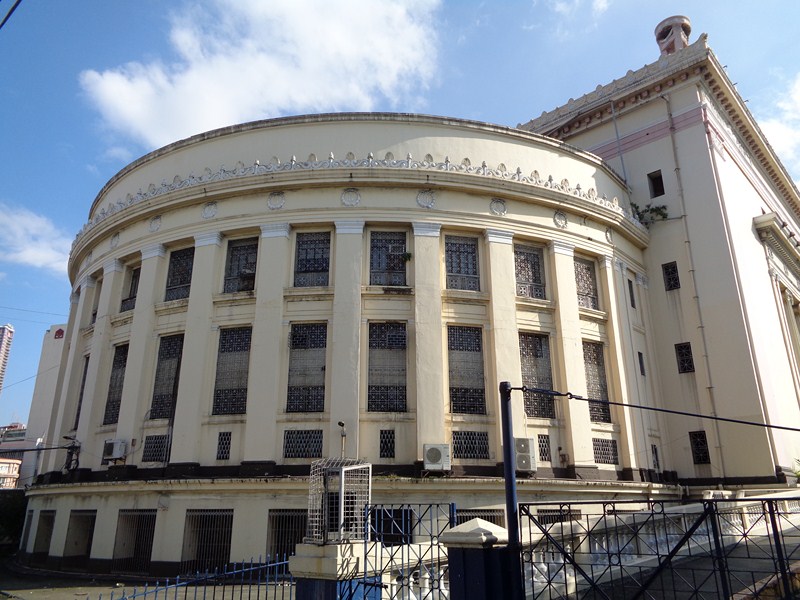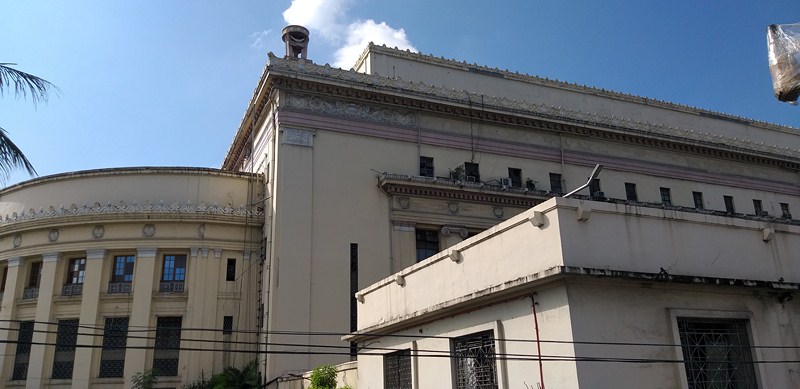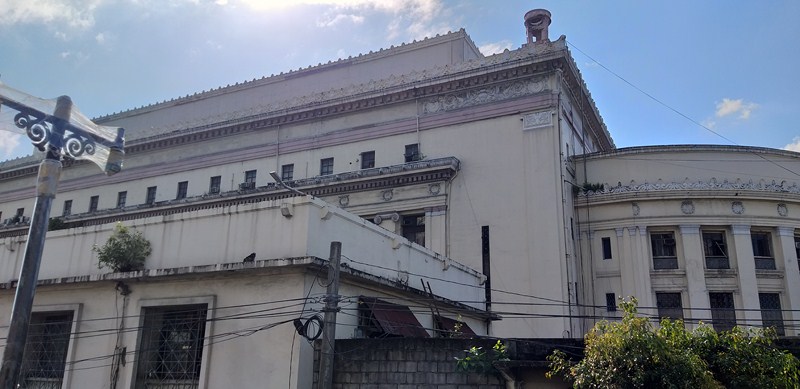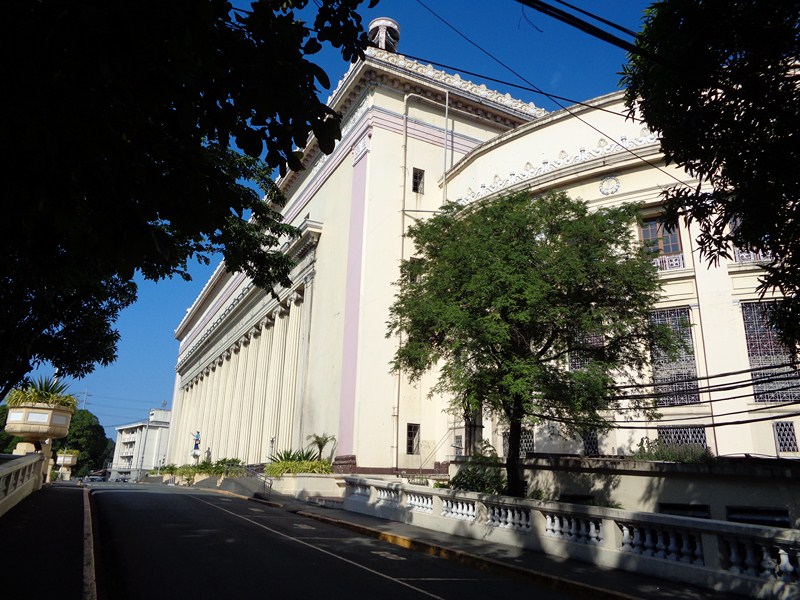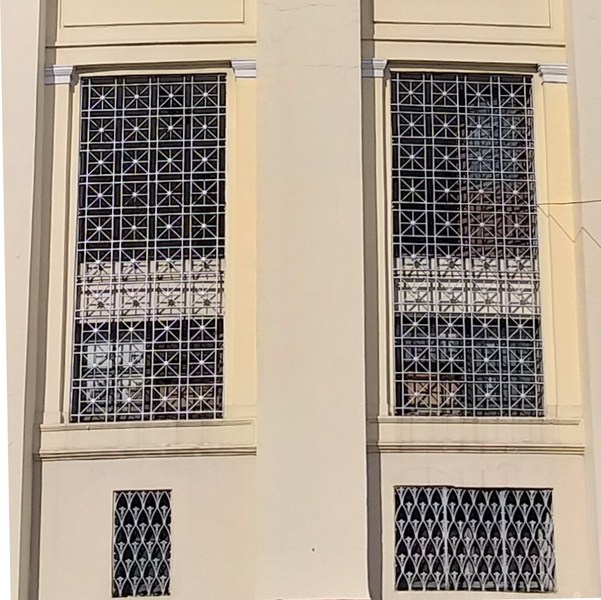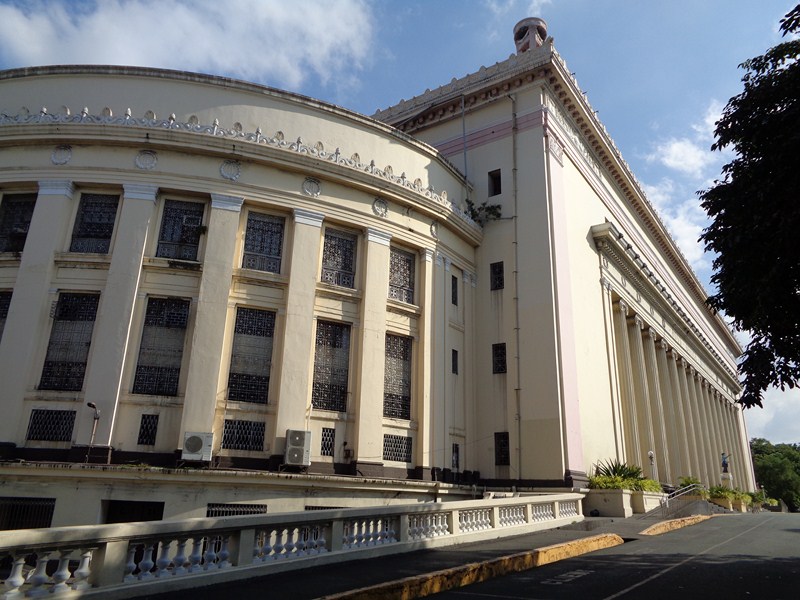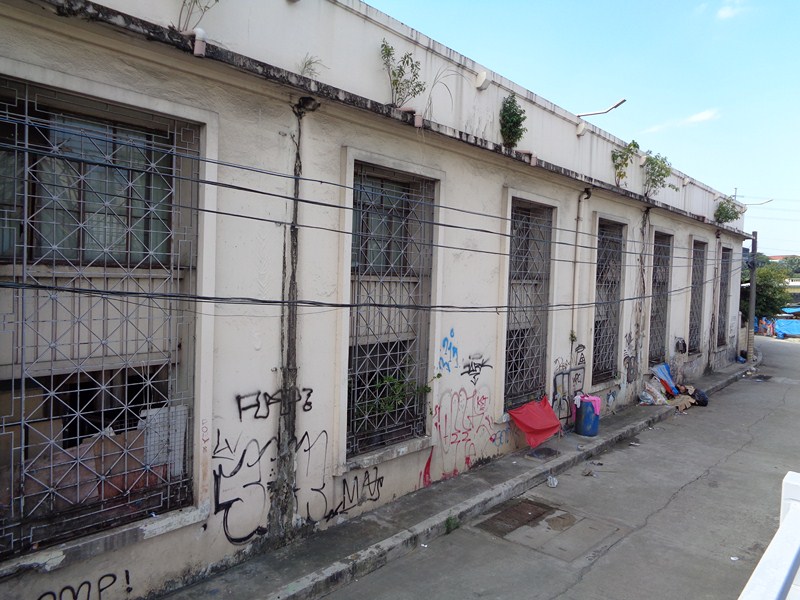The Manila Central Post Office Building (often called the Post Office Building), the center of the Philippine postal services and the headquarters of then-Bureau of Posts (now the Philippine Postal Corporation), houses the main mail sorting-distribution operations of the Philippines. This building hums daily with brisk postal service with letters pouring in daily from every corner of the country.
This principal postal hub of today’s modern and efficient Philippine Postal Corporation, still continuing a centuries-old tradition of sorting and distributing letters from Filipinos who still prefer the postal service, houses a mechanized automatic letter-sorting machine, a new Postal Code system, airmail, motorized letter carriers and other facilities.
Strategically located along the banks of the Pasig River (part of the Burnham Plan of Manila for easy water transportation of mails), at the foot of Jones Bridge, it lies at the northern end of Liwasang Bonifacio (formerly Plaza Lawton where building’s main entrance faces) in Ermita and is flanked by the Manila Metropolitan Theater to its northwest. Its central location, with converging avenues, made the building readily accessible from Quiapo, Binondo, Malate and Ermita as well as the Pasig River (used conveniently as an easy route for delivering mail).
Check out “The Revitalized Jones Bridge”
This official transmitter of mail, money and goods traces its beginnings to the September 15, 1902 Act No. 462 of the Philippine Commission which created the Bureau of Posts. On April 13, 1987, the Bureau of Post was renamed the Postal Service Office (PSO) by the virtue of Executive Order No. 125 signed by then-President Corazon C. Aquino, placing it under the Department of Transportation and Communications (DOTC) and, on April 2, 1992, by virtue of the Republic Act No.7354 issued by then-President Fidel V. Ramos, PSO became a government owned and controlled corporation named as the Philippine Postal Corporation (more commonly known today as PhilPost). It is now under the direct supervision of the Office of the President.
From August 2, 1920 up to January 9, 1922, the foundation of the post office was laid out but the work was put on hold because of the scarcity of funds (it was worth one million pesos) but was reported to be 56% complete towards the end of the year. The plan for the completion of post office building was made public on November 28, 1927 but the awarding of the project only happened a year after, on February 1928, when the completion of the building was continued. The building was completed in 1931.
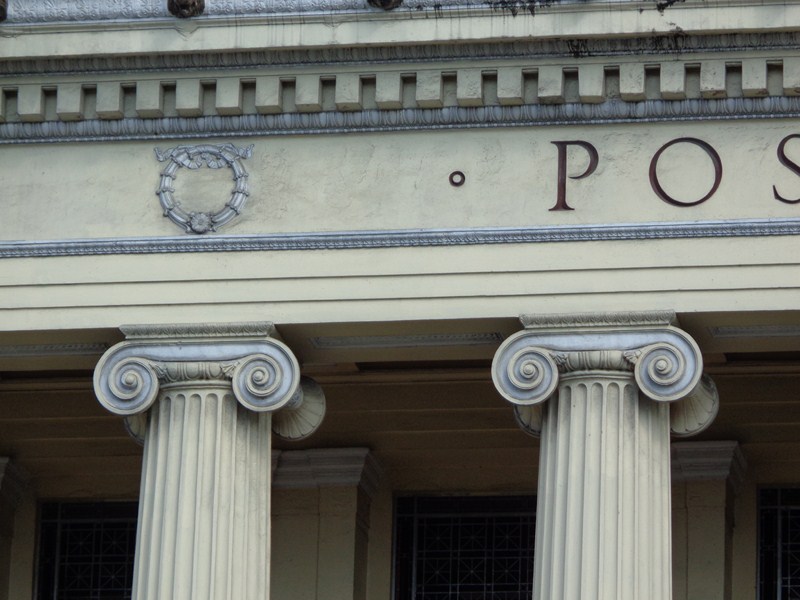
The Ionic capitals of the fluted marble columns. The entablature above is decorated with medallions and lined with dentils
Designed in Neo-Classical style (expressing order and balance) by Filipino architects Juan M. Arellano (considered as his magnum opus) and Tomás Mapúa and American architect Ralph Harrington Doane, it is one of the greatest examples of American Colonial architecture in the Philippines. The construction of the original building began under the supervision of the architecture firm of Pedro Siochi and Company.
During World War II, it was severely damaged in the Battle of Manila and was, subsequently, rebuilt in 1946 while retaining most of its original design. Considered as the grandest building during its time, the Post Office Building is now considered as one of the dominating landmarks in Metro Manila. On November 23, 2018, because of its architectural significance, it was declared as an Important Cultural Property (ICP) by the National Museum of the Philippines.
In 2012, with more modern ways of communication and advancing technology now widespread and the cost of maintaining the building too much, talks are underway between the Department of Finance and Fullerton Hotels of Singapore to convert the building into a 5-star hotel.
The main body of the huge, colossal rectangular facade, lined by 14 soaring fluted marble columns with Ionic capitals (above the steps just before entering the lobby), is capped by a recessed rectangular attic storey and flanked and buttressed by two semicircular wings or drums. The entablature above the columns are decorated with medallions and lined with dentils.
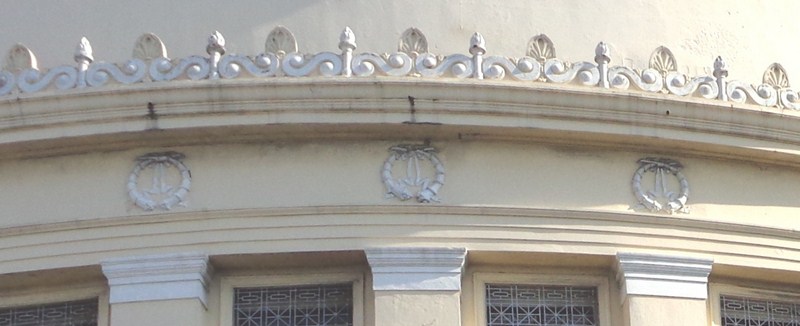
The square columns topped by Doric capitals and medallions. The cornice is lined by scroll-like decorations.
At each end of the main lobby are subsidiary halls housed under semicircular spaces roofed with domes. The plain, square columns here are topped by Doric capitals, above which are medallions. The top of the cornice are lined with scroll-like decorations.
The big windows of the building are lined with steel grilles with Grecian patterns. The atrium in the middle of the building provides natural light and ventilation.
In front of the building is the Postman Statue, symbolizing the extraordinary level of commitment of the postal force, was erected last September 15, 1975 to coincide with the 73rd anniversary of the establishment of the Bureau of Posts.
On November 23, 2018, a Museum Ceremonial Groundbreaking Marker was mounted to start the construction and retrofitting of Philippine Postal and Philatelic Museum which houses a historical archive of postage stamps, important letters of national personalities and other artifacts. The MCPO also sells the latest stamp issues from it Philatelic Section as well as other types of different stamps (Mint, Cancelled, se-tenant, Souvenir Sheets and Sheetlets). Annually, the MCPO also exhibits old stamps and mailing equipment.
AUTHOR’S NOTES
The facade of the Post Office, seemingly impressive along the Liwasang Bonifacio side, is quite depressing when seen, up close and personal, along the Pasig River side. The grounds at this side have been taken over by some vagrants and, similar to what is happening with many of our old churches, advanced plant growth has taken root over parts of the facade. The now peeling and fading paint job has also been vandalized by graffiti. Dangling wires are also an eyesore.
Manila Central Post Office Building: Liwasang Bonifacio, Magallanes Drive, Intramuros, Manila. Tel: (02) 8527-0089.


